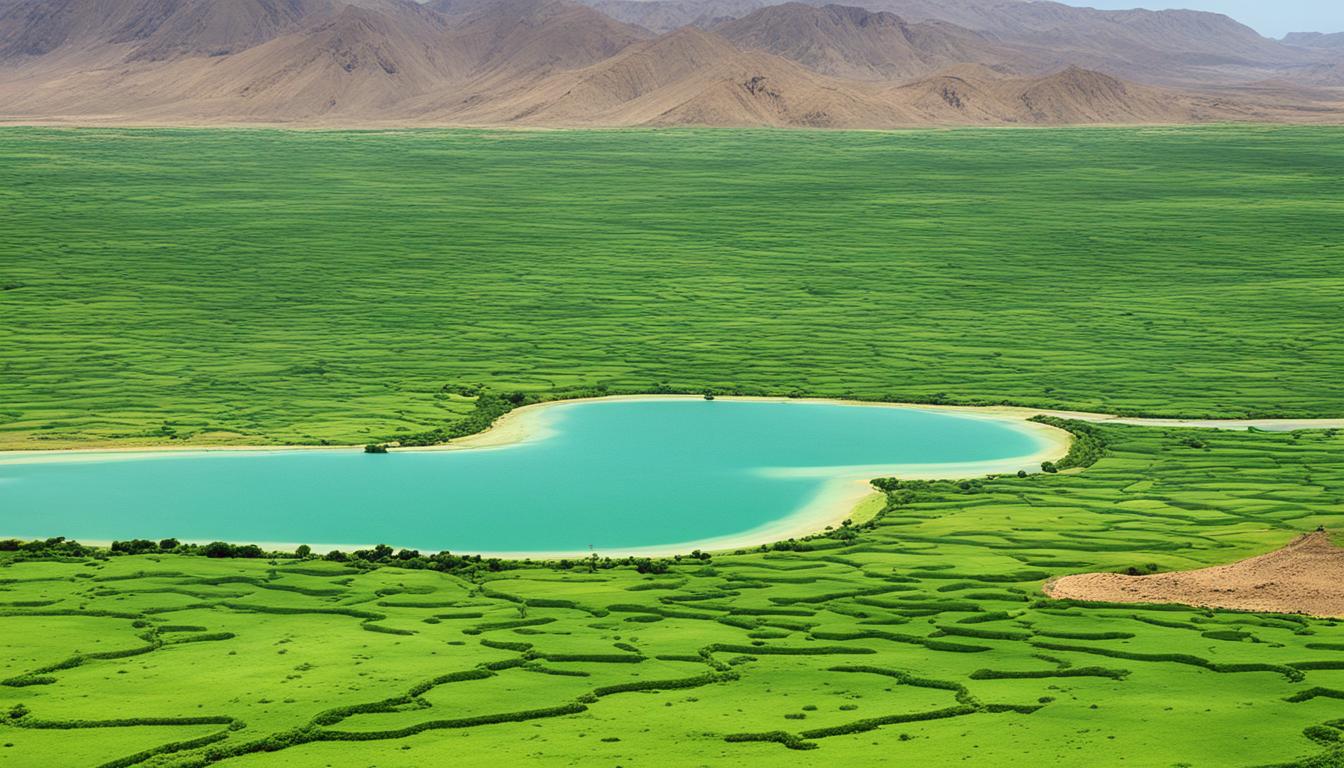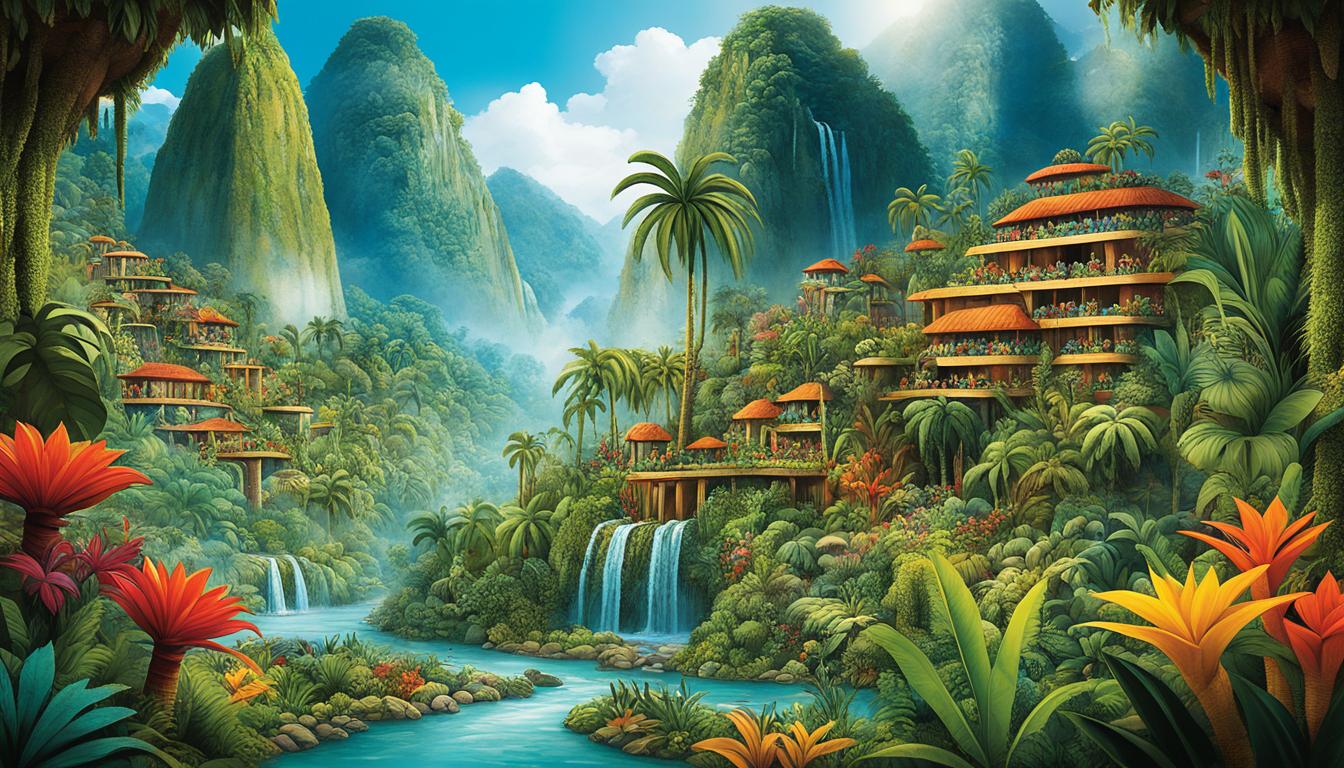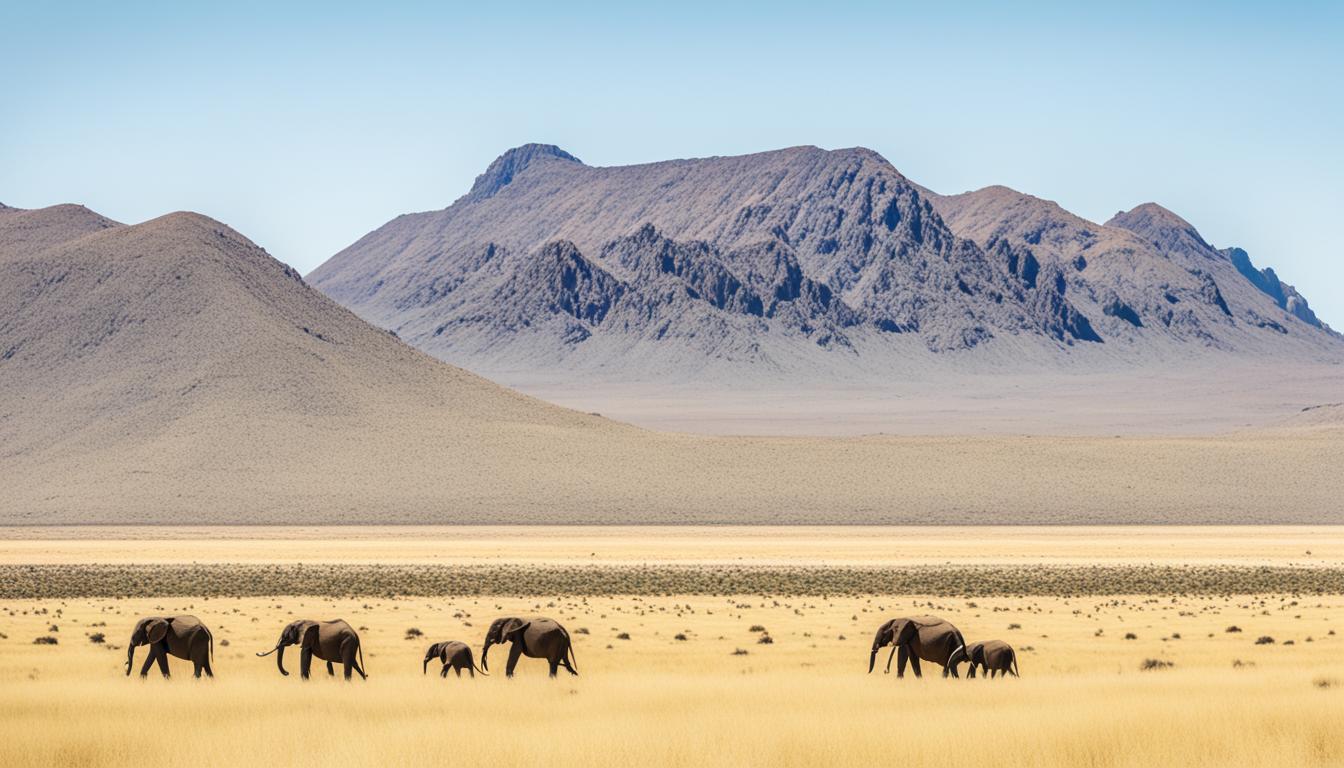Dominica Sacred Natural Sites and Biodiversity
Dominica, the Nature Island of the Caribbean, is home to breathtaking natural beauty and a commitment to environmental conservation. With its diverse range of terrestrial and marine resources, including volcanoes, forests, rivers, and wetlands, Dominica stands as a global hotspot for biodiversity. But did you know that this small island nation has made significant strides in sustainable development and the preservation of its unique ecological heritage?
Key Takeaways:
- Dominica is known for its stunning natural beauty and rich biodiversity.
- The country is committed to sustainable development and conservation.
- Dominica’s efforts include embracing sustainable architecture and urban planning.
- Agricultural practices prioritize sustainability and the preservation of biodiversity.
- Dominica has submitted its third national report to the Convention on Biological Diversity.
Introduction to Dominica’s Environment
Dominica, a volcanic island located in the Caribbean, offers a captivating blend of natural beauty and diverse ecosystems. Its rugged and steep terrain, adorned with majestic mountains and picturesque valleys, creates a breathtaking backdrop for exploration and adventure. But it’s not just the striking landscapes that make Dominica truly special. The island is home to a rich biodiversity, characterized by extensive forest cover, pristine rivers, and vibrant marine environments.
However, this natural paradise is not without its threats. Dominica’s environment faces challenges from both human activities and natural disasters. Deforestation, unsustainable practices, and the island’s vulnerability to hurricanes pose significant risks to its biodiversity and natural resources. Recognizing the importance of preserving its ecological treasures, the government of Dominica has implemented a range of initiatives and policies aimed at safeguarding its environment.
“Dominica’s environment is a precious asset that we must protect for future generations. We are committed to sustainable development and the conservation of our natural resources, working towards a harmonious coexistence between humans and nature.” – Prime Minister of Dominica
Through strategic planning and active conservation efforts, Dominica aims to balance development and sustainability while preserving its unique natural heritage. By understanding and addressing the threats to its environment, Dominica seeks to ensure that its natural beauty and bountiful biodiversity continue to thrive for years to come.
The Threats Facing Dominica’s Environment
As Dominica seeks to protect its environment, it is essential to identify and mitigate the threats that pose a risk to its natural resources and biodiversity. The following are some key challenges:
- Deforestation: Unauthorized logging and land clearance for agriculture and infrastructure projects contribute to habitat loss and disrupt ecosystems.
- Unsustainable Practices: Activities such as overfishing, destructive fishing methods, and improper waste management can harm marine life and degrade coastal ecosystems.
- Vulnerability to Hurricanes: Located in the hurricane-prone Caribbean region, Dominica experiences the devastating impact of these natural disasters, including damage to infrastructure, habitats, and wildlife.
Despite these threats, Dominica remains committed to tackling these challenges through proactive conservation efforts and sustainable development practices. By addressing the root causes and collaborating with local communities, organizations, and international partners, Dominica strives to protect its natural resources and preserve its unique biodiversity.
Dominica’s Ecological Landscapes
Dominica’s geographical features give rise to a diverse range of ecological landscapes. The island’s volcanic origins have sculpted a dramatic topography, creating mountains, gorges, and lush valleys. These varied habitats support a wide array of plant and animal species, making Dominica a global hotspot for biodiversity.
Dominica is home to lush rainforests teeming with endemic flora and fauna, unique montane cloud forests with mystical beauty, rivers and waterfalls nurturing diverse aquatic life, colorful gardens showcasing an abundance of tropical plants, healthy coral reefs supporting vibrant marine ecosystems, mangroves providing essential nursery habitats, and secluded bays sheltering endangered species.
| Ecological Landscape | Description |
|---|---|
| Rainforests | Dominica’s rainforests are filled with lush vegetation and are home to numerous plant and animal species, including the iconic Sisserou parrot. |
| Cloud Forests | The island’s cloud forests are mystical and unique, shrouded in mist and home to rare and endemic plant species. |
| Coral Reefs | Dominica’s coral reefs are vibrant and healthy, supporting a wide variety of marine life, including colorful fish, sea turtles, and vibrant corals. |
| Rivers and Waterfalls | Dominica’s rivers and waterfalls provide important habitats for diverse aquatic life, creating a stunning natural landscape. |
| Mangroves | Mangroves along the coastlines of Dominica serve as vital nurseries for marine species and protect against erosion and storms. |
| Secluded Bays | Dominica’s secluded bays provide shelter for endangered species and offer serene and untouched natural beauty. |
Dominica’s ecological landscapes offer a glimpse into the island’s incredible biodiversity and highlight the importance of preserving these unique habitats for future generations.
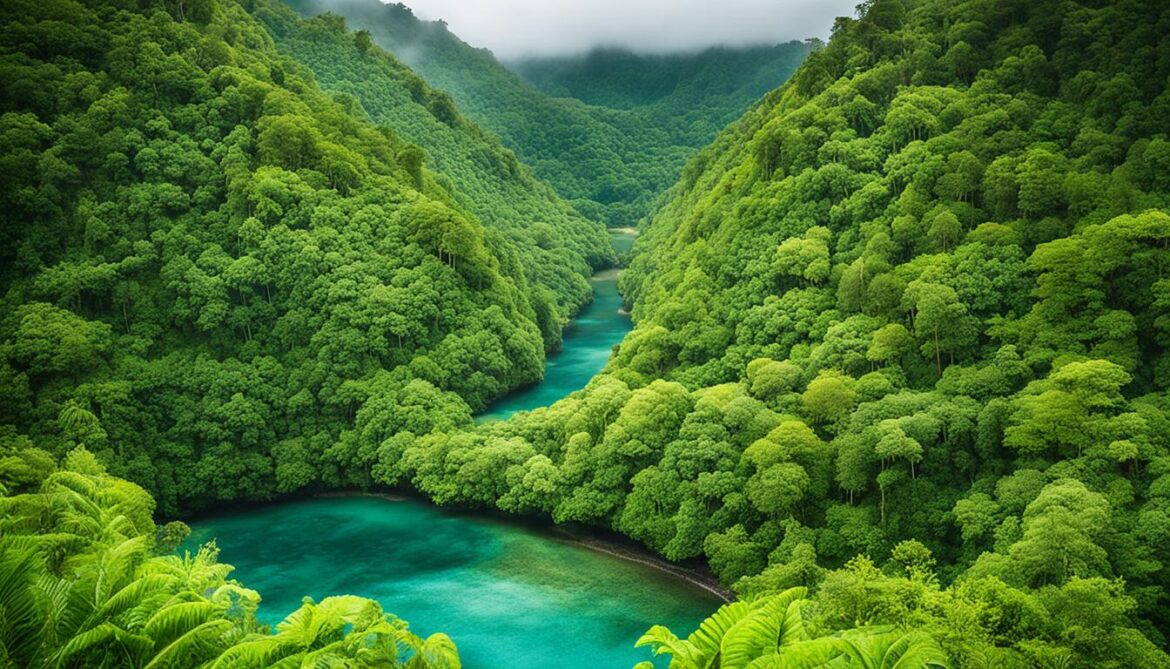
Dominica’s Vision for Biodiversity Conservation
Dominica’s commitment to biodiversity conservation is driven by a vision of sustainable development and the protection of its natural resources. The country recognizes the importance of preserving its terrestrial and marine biodiversity and aims to establish mechanisms for their conservation and sustainable management.
- Sustainable Development: Dominica’s vision emphasizes the integration of conservation efforts with sustainable development practices. By finding a balance between economic growth and environmental protection, the country aims to create a future where both humans and nature can thrive.
- Conservation: Dominica recognizes the need to protect its unique ecosystems and species. Through strategic conservation initiatives, the country aims to safeguard biodiversity and preserve the delicate ecological balance.
- Protected Areas: One of Dominica’s key goals is the establishment of protected areas. These designated zones will serve as sanctuaries for endangered species, important habitats, and fragile ecosystems, ensuring their long-term survival.
- Public Awareness: Dominica understands the crucial role of public awareness in biodiversity conservation. By promoting education and engagement, the country aims to foster a sense of responsibility and stewardship towards the environment among its citizens.
In pursuit of this vision, Dominica has set several conservation targets, including inventorying biological resources, enforcing regulations to prevent illegal wildlife trade, restoring degraded habitats, and promoting public awareness and education. These efforts align with global strategies for sustainable development and biodiversity conservation, positioning Dominica as a leader in environmental stewardship.
Quote:
“Our vision for biodiversity conservation is grounded in the principles of sustainable development and the protection of natural resources. By taking proactive measures to conserve our diverse ecosystems and raise public awareness, we can ensure a future where both humans and nature can thrive.” – Minister of Environmental Conservation, Dominica
Dominica’s commitment to biodiversity conservation goes hand in hand with its dedication to sustainable development. Through the establishment of protected areas, enforcement of regulations, restoration of habitats, and promotion of public awareness, Dominica is pursuing its vision of preserving its natural heritage and fostering a harmonious relationship between humans and the environment.
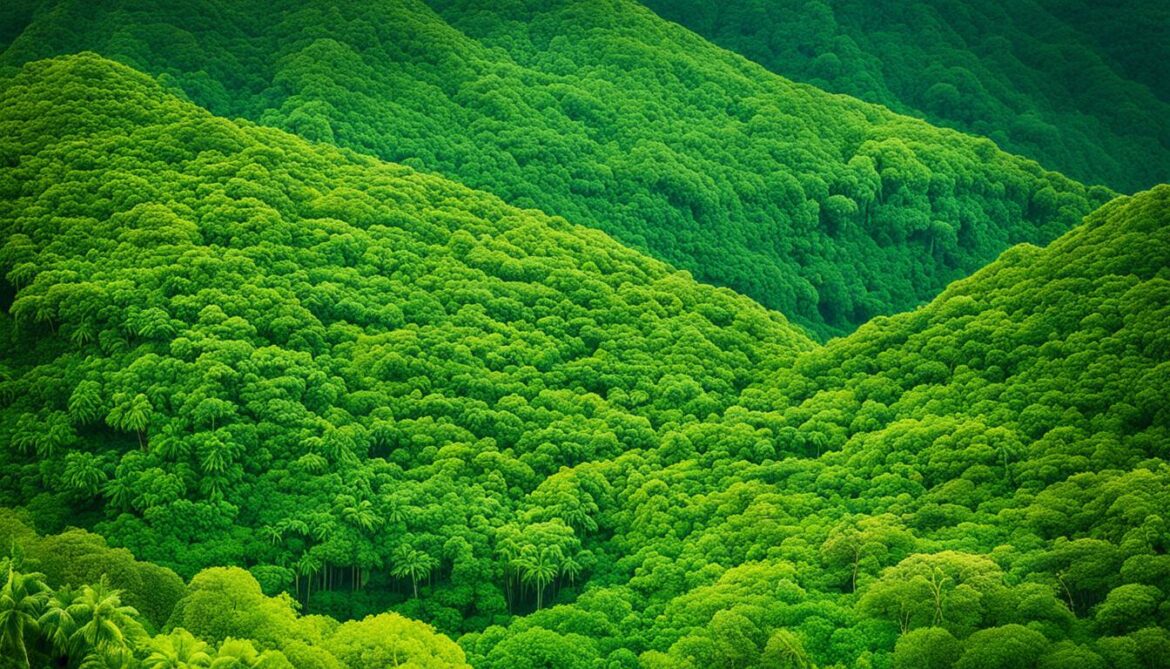
Sustainable Architecture and Urban Planning in Dominica
Dominica is at the forefront of sustainable architecture and urban planning, championing the integration of biodiversity into the built environment. The country is committed to promoting eco-friendly construction practices and green infrastructure, with a strong emphasis on energy efficiency and the use of renewable energy sources.
One of Dominica’s key priorities is the development of energy-efficient buildings that reduce carbon emissions and minimize the impact on the environment. These buildings are designed with environmentally-friendly materials and cutting-edge technologies to optimize energy consumption and enhance sustainability.
Renewable energy sources play a vital role in Dominica’s sustainable architecture and urban planning efforts. The country harnesses the power of wind, solar, and geothermal energy to meet its electricity needs while minimizing reliance on fossil fuels. By embracing renewable energy, Dominica is not only mitigating the effects of climate change but also contributing to the long-term sustainability of the island.

Green spaces are an integral part of Dominica’s urban planning, providing residents with access to nature and promoting overall well-being. Parks, rooftop gardens, and landscaped areas are strategically incorporated into urban areas, creating a harmonious blend of nature and infrastructure. These green spaces not only enhance the aesthetic appeal of the environment but also contribute to temperature regulation, air quality improvement, and biodiversity conservation.
Dominica’s approach to sustainable architecture and urban planning extends beyond energy efficiency and green spaces. The country also places a strong emphasis on eco-friendly construction practices, such as utilizing locally sourced materials and implementing water conservation measures. By leveraging sustainable building techniques, Dominica reduces its environmental impact and ensures the longevity of its infrastructure.
The integration of sustainable architecture and urban planning is a testament to Dominica’s commitment to creating environmentally-friendly and resilient communities. By prioritizing energy efficiency, green infrastructure, and sustainable construction, Dominica is setting an example for other nations in the pursuit of a more sustainable future.
The Role of Agriculture in Biodiversity Conservation
Agriculture is a vital component of Dominica’s efforts to conserve biodiversity and protect natural habitats. The country is committed to promoting sustainable farming practices that prioritize the long-term preservation of biodiversity and the health of the ecosystem.
One key objective is to protect soil quality through the implementation of sustainable farming techniques. By adopting practices such as crop rotation, cover cropping, and minimal tillage, farmers in Dominica can help maintain the fertility and structure of the soil. This protects the natural habitat and promotes the growth of diverse plant species, essential for a thriving ecosystem.
Another crucial aspect is minimizing chemical use in agriculture. Dominica encourages the use of organic fertilizers derived from natural sources, such as compost, manure, and plant-based amendments. By reducing the reliance on synthetic chemicals, the country aims to mitigate the potential negative impacts on biodiversity and create a healthier environment for both flora and fauna.
Biological pest control methods are also favored in Dominica to minimize chemical use. By encouraging the natural predators of pests and employing organic pest control strategies, farmers can effectively manage agricultural pests while minimizing the detrimental effects on the ecosystem.
Dominica recognizes the importance of research in driving agricultural biodiversity conservation efforts. The country supports scientific studies that explore various aspects of agricultural biodiversity, including crop diversity, indigenous plant species, and the preservation of traditional farming practices. These research findings contribute to the development of sustainable farming practices that benefit both the environment and local communities.
Sustainable agriculture is crucial for preserving Dominica’s natural resources and ensuring the long-term conservation of biodiversity. By prioritizing soil quality, minimizing chemical use, and supporting ongoing research, Dominica strives to create a harmonious balance between agriculture and the protection of its unique ecological heritage.
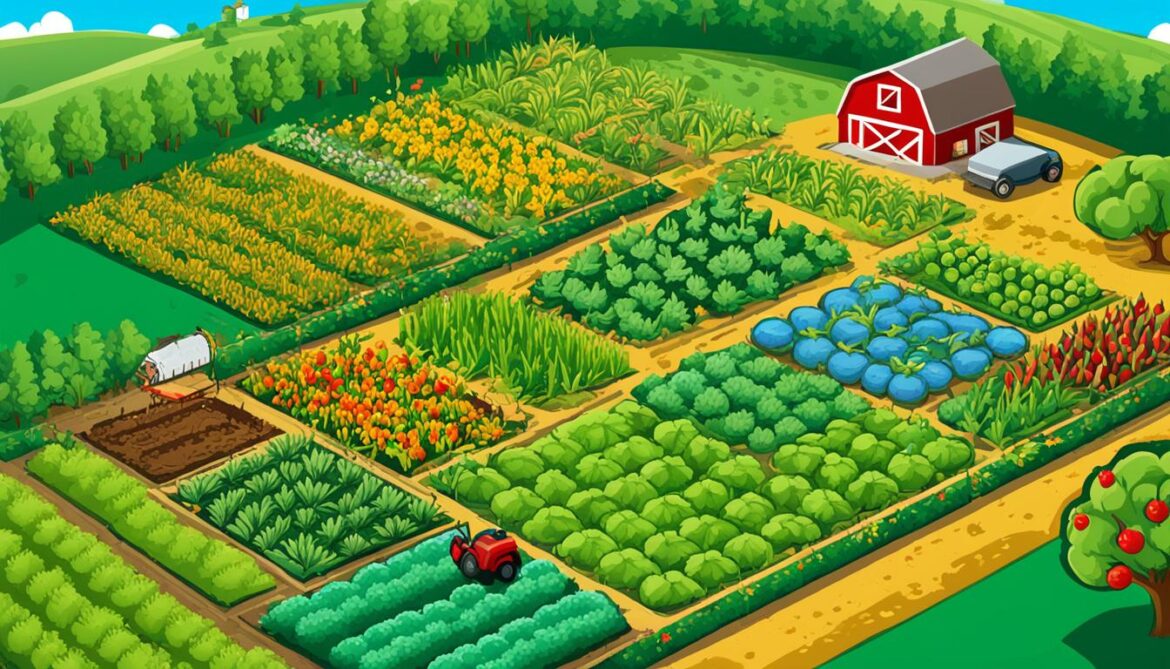
Rediscovery of the Black-capped Petrel on Dominica
A team of scientists has recorded the presence of the Black-capped Petrel, a rare seabird, on Dominica. The species was thought to be extinct on the island since the late 1800s. The rediscovery of the Black-capped Petrel on Dominica presents a significant opportunity for conservation efforts to preserve this imperiled species. Dominica’s commitment to nature conservation and the protection of its forests, which provide crucial nesting habitats for the petrels, makes the island a vital partner in securing the future of the species.
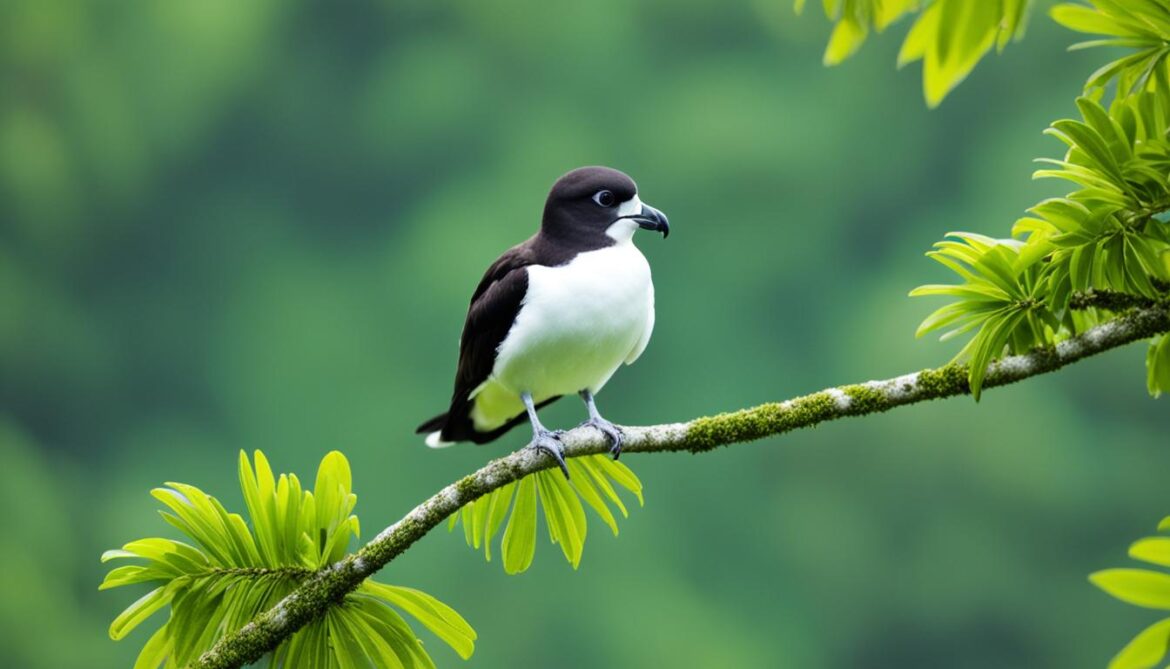
Conservation Efforts for the Black-capped Petrel
The Black-capped Petrel is classified as an endangered species by the International Union for Conservation of Nature (IUCN) due to habitat loss, introduced predators, and disturbance caused by human activity. The recent rediscovery of this species on Dominica has spurred significant conservation efforts to ensure its survival.
“The presence of the Black-capped Petrel on Dominica is a remarkable find. It underscores the importance of preserving and protecting our natural resources to safeguard fragile ecosystems and the species that depend on them,” said Dr. Maria Jones, a leading ornithologist involved in the rediscovery.
Conservation organizations, local communities, and government agencies have joined forces to implement measures to protect the Black-capped Petrel and its habitat. These efforts include:
- Creating protected areas and habitats specifically for the Black-capped Petrel
- Implementing strict regulations to mitigate disturbances and preserve nesting sites
- Engaging local communities in conservation education and awareness programs
- Collaborating with international partners to support research and monitoring initiatives
The rediscovery of the Black-capped Petrel serves as a powerful reminder of the importance of biodiversity conservation and the need for collective action to protect endangered species. Through dedicated conservation efforts, Dominica aims to secure a future where the Black-capped Petrel and other endangered species thrive in their natural habitats.
Dominica’s Efforts: Reporting to the Convention on Biological Diversity
Dominica has recently submitted its third national report to the Conference of the Parties of the Convention on Biological Diversity. This report serves as a comprehensive overview of Dominica’s efforts in biodiversity conservation and highlights various thematic areas prioritized by the country.
The National Report
The report emphasizes the importance of preserving biodiversity in Dominica’s rich ecological landscapes. It provides insights into the conservation strategies employed in inland water ecosystems, marine and coastal biodiversity, agricultural biodiversity, forest biodiversity, dry and sub-humid lands, and mountain biodiversity.
Through this report, Dominica showcases its commitment to priority setting, addressing challenges, and setting targets for effective biodiversity management. The country recognizes that international cooperation plays a crucial role in achieving these goals and highlights the need for collaboration among nations.
Challenges and Targets
Dominica’s national report acknowledges the challenges faced in biodiversity conservation, such as habitat loss, invasive species, and climate change. By identifying these challenges, the country aims to develop targeted strategies and actions to address them effectively.
The report also outlines specific targets set by Dominica to safeguard its natural resources and protect vulnerable species. These targets include the establishment of protected areas, the implementation of sustainable farming practices, and the promotion of public awareness and education about biodiversity conservation.
Global Strategy for Plant Conservation
Dominica’s commitment to biodiversity extends to plant conservation as well. The report aligns with the Global Strategy for Plant Conservation, which aims to halt the decline of plant diversity and ensure the sustainable use of plant resources.
Through this strategic alignment, Dominica emphasizes the importance of conserving and restoring plant species and their habitats. The country recognizes the vital role that plants play in maintaining ecosystem balance, providing food and medicine, and supporting livelihoods.
| Thematic Areas | Priority Setting | Challenges | Targets |
|---|---|---|---|
| Inland Water Ecosystems | Identifying key conservation areas | Water pollution and habitat degradation | Improving water quality and ensuring sustainable fisheries |
| Marine and Coastal Biodiversity | Establishing marine protected areas | Coral bleaching and overfishing | Restoring coral reefs and promoting sustainable fishing practices |
| Agricultural Biodiversity | Promoting organic farming | Loss of traditional crop varieties | Conserving traditional crop varieties and promoting sustainable agriculture |
| Forest Biodiversity | Regulating logging activities | Deforestation and illegal logging | Increasing forest coverage and protecting endangered species |
| Dry and Sub-humid Lands | Implementing soil conservation measures | Desertification and soil erosion | Restoring degraded lands and promoting sustainable land management |
| Mountain Biodiversity | Preserving high-altitude ecosystems | Loss of habitat due to climate change | Adapting to climate change impacts and conserving endemic species |
Dominica’s dedication to reporting on its biodiversity conservation efforts reflects its commitment to transparency and accountability. By actively participating in the Convention on Biological Diversity and sharing its progress, Dominica aims to inspire other nations and promote global action for the protection of our planet’s natural heritage.
Conclusion
Dominica, known as the Nature Island of the Caribbean, is leading the way in sustainable development and the protection of its extraordinary biodiversity. The island actively integrates biodiversity into its built environment with sustainable architecture and urban planning practices. Additionally, Dominica promotes sustainable farming techniques to safeguard natural habitats and conserve its diverse ecosystems.
With a strong focus on cultural heritage and environmental conservation, Dominica’s efforts are aimed at preserving the island’s unique natural wonders for future generations. By raising public awareness and fostering international cooperation, Dominica is dedicated to safeguarding its ecosystems and ensuring the sustainable development of the island.
Through these conservation efforts, Dominica not only contributes to the global efforts in biodiversity conservation but also sets an example for other nations. The island showcases the importance of sustainable practices, showcasing how they can effectively protect cultural heritage, ecosystems, and enhance long-term sustainable development.




